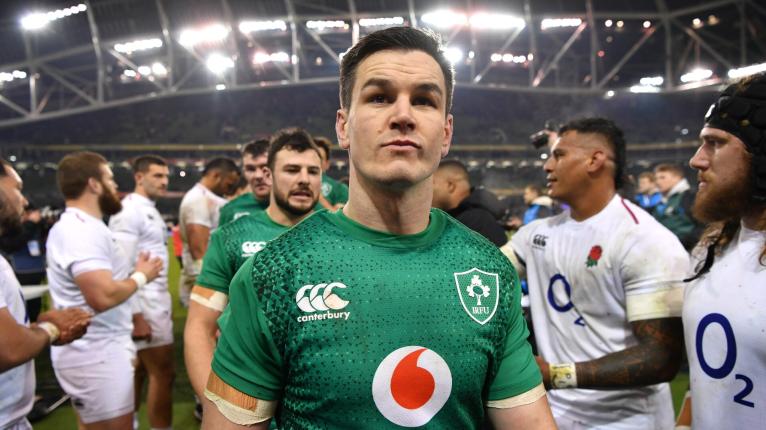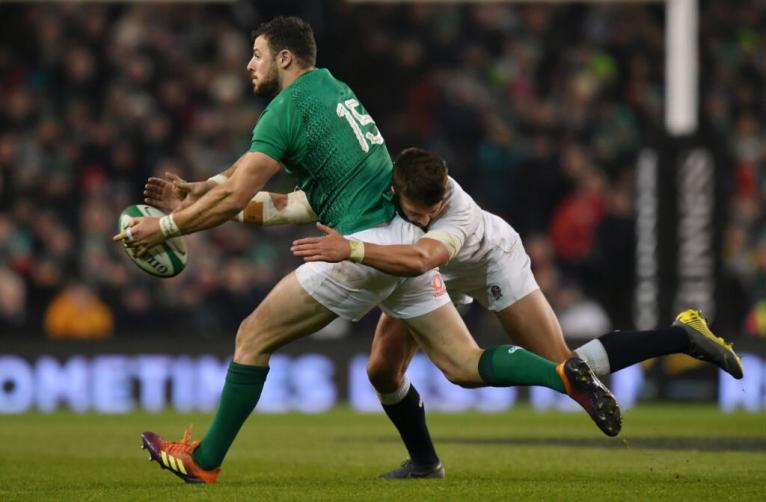Forget Six Nations momentum, England have found something more important eight months out from a RWC

As George Ford carried the ball into touch and brought an end to the game in Dublin on Saturday, you could be forgiven for having not predicted this particular outcome.
Ireland were strong favourites. They were reigning Guinness Six Nations champions, having secured a Grand Slam a year previously, and they had backed that up with impressive summer and autumn campaigns, including knocking off New Zealand in a game where they had looked comfortably the superior side.
A few predictions of an England win had been doing the rounds and it was certainly a possibility, but no one, save likely for those inside the camp, saw the ruthlessness of that England performance coming, nor did they see the emphatic nature of the victory as anything other than the longest of shots.
It’s not that England were that far behind Ireland in 2018, it’s just that the Six Nations is often brutally tight, home advantage is a big contributor to results and that the momentum, prior to kick-off at the Aviva Stadium, had largely been with the hosts.
For Ireland, it’s a wake-up call. Just their second defeat in 20 games, Joe Schmidt now has the remainder of the Six Nations to ponder what went wrong, adjust if he feels they need to and then attempt to unleash a backlash that allows them to retain that lost momentum. They certainly wouldn’t be the first team to re-plot their course in a Rugby World Cup year and then go on to enjoy success at the competition.

As for England, they have now propelled themselves fully into the championship. France loom on the horizon, with Le Crunch set to take place at Twickenham on Sunday, whilst questions on the back row, back three and front row all continue to answer themselves. Ben Youngs turned in a performance of the highest quality at scrum-half and Owen Farrell looked comfortable as ever at fly-half, now four games into his stint back at his preferred position, after a couple of years at inside centre.
Perhaps the most important thing England got out of the contest, however, was the chemistry and effectiveness that their new-look midfield displayed.
In the Six Nations, nothing matters as much as momentum. England now have that, and they have a shot at retaining the title they won in 2016 and 2017, but it’s impossible to ignore the Rugby World Cup elephant in the room. With an eye on that tournament in Japan, one of the biggest concerns about England coming into the year was the balance of their midfield.
Eddie Jones’ line was that Manu Tuilagi was an outside centre. Certainly no shortage of them in English rugby.
Fourteen minutes of rugby, that’s all Ben Te’o needed to be parachuted into England’s squad for the autumn internationals.
Jonathan Joseph was injured, Farrell’s duties at 12 vacated in a desire to move him to 10 and Alex Lozowski and Ollie Devoto continued to flirt around the fringes. Elliot Daly and Jack Nowell were both options, but seemingly preferred at other positions.
The only midfield constant for England over the entirety of the last two international windows has been Henry Slade at 13.
Continue reading below…
Watch: Mako Vunipola and Jonny May speak to RugbyPass following England’s win
On Saturday afternoon, he rewarded that faith with arguably his best performance in an England jersey and, coupled with Tuilagi at inside centre, England may have stumbled into their best midfield combination. Let’s not forget, if Te’o had been fit, he would have, in all likelihood, started in place of Tuilagi in Dublin.
As a pair, playing off of the impressive Farrell at 10, Tuilagi and Slade shone. They interchanged at 12, keeping Ireland’s defence guessing as to where Tuilagi would hit the line, and several times the Leicester centre ran back inside against the grain, collecting pop passes from Farrell or Slade that saw him making inroads into the green line.
Combining those outside-to-inside lines with more orthodox straight-running and outside arcs at 12 and 13, Tuilagi showed a more versatile attacking game in the jersey than the one Te’o was able to put together in the autumn.
In fairness to Te’o, he did not get the luxury of the front-foot ball that Tuilagi enjoyed on Saturday and purely as a one-out runner or strike runner, Tuilagi could not match Te’o’s power. That said, where Te’o and Slade felt like individual players in the autumn, Tuilagi and Slade felt like a combination in Dublin.
That chemistry, surprising given this was the first time they played together, was only further highlighted on defence.
In the autumn, England’s midfield were caught tight and narrow a number of times, with teams enjoying any kind of tempo capable of pushing the ball wide, turning the corner and isolating England’s wings. Whether a symptom of a lack of game time for Te’o at that point, a disconnect between the two or a general lack of lateral mobility, the pair were regularly caught close to the ruck.
With Tuilagi in and shifting between 12 and 13, as well as utilising his more agile speed to shoot out and track down Irish ball-carriers with dominant and efficient solo tackles, England were able to cut off Ireland’s width on Saturday, rather than being exposed by it.

There were other contributary factors, like the spoiling and slowing work done at the breakdown by Mako Vunipola and Tom Curry in particular, but it was certainly noticeable the trust Tuilagi and Slade had in each other defensively and their ability to move laterally just as well as they did vertically. In no moment was this as evident as when Slade made his excellent defensive read late in the second half, hunted down Sexton’s pass and dived to intercept, before crawling over the line for a try.
Where Te’o and Slade felt serviceable, and capable of doing a job for England, Tuilagi and Slade felt like a unit that had been playing together for years, not minutes. Their synergy with Farrell shouldn’t go under the radar, either, as the Saracen is the man that Jones has now committed to at fly-half. Similarly, they linked up well with Daly when he joined the back line, another player that Jones has seemingly committed to ahead of the RWC.
The elephant in the room moving forward, of course, will be the fitness of Tuilagi, who was playing in just his third game for England since 2014 on Saturday.
This RWC cycle has not been a kind one, with injuries wrecking season after season for the 27-year-old, but with each passing week that he stays fit for both Leicester and England, hope is kindled that the worst of those issues are behind him.
If he can stay out of the treatment room and keep himself on the pitch, the potential partnership he could form with Slade should have England fans salivating.
The next few weeks will be interesting ones for Jones and England, with Te’o set to return and the ensuing selection dilemma that will play out in the Australian’s head. Does he go to his favoured option in Te’o or does he trust in Tuilagi, who he has previously described as a 13, continuing to fill that void outside of Farrell?
A home Le Crunch in seven days is not going to lack for any kind of hype or excitement, but the decisions to be made in the midfield, as well as the performance they come out with at Twickenham, adds another level of intrigue to an already compelling fixture.
Watch: Conor Murray reflects on defeat to England






























